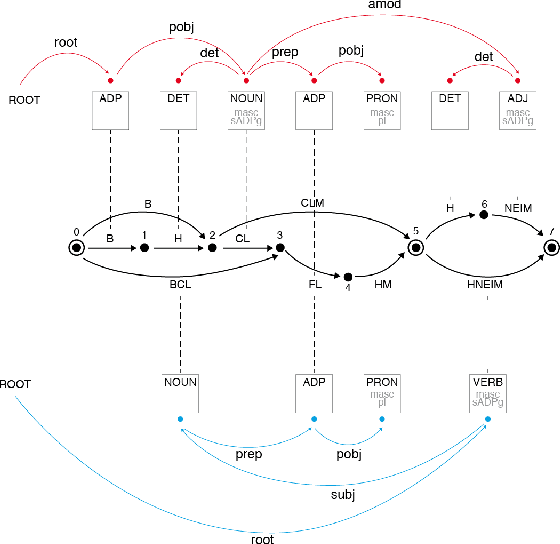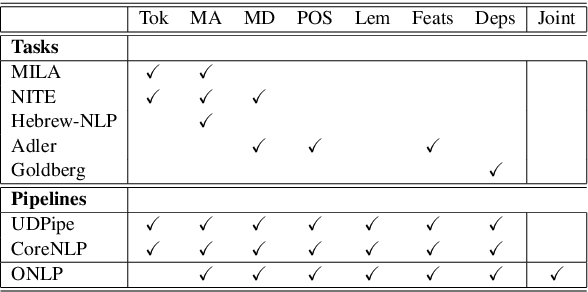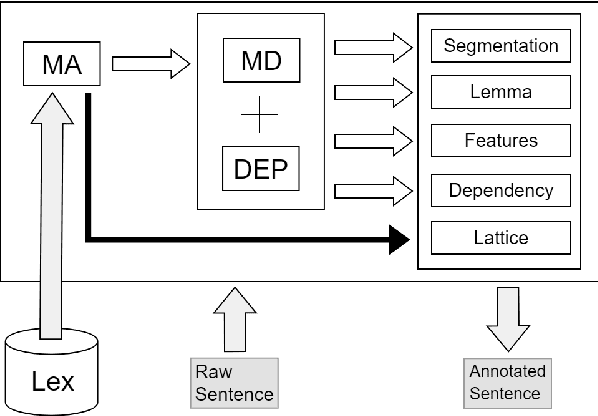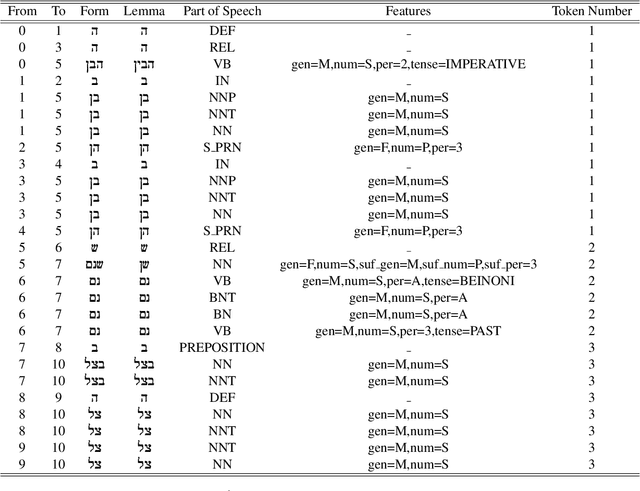Stav Klein
From SPMRL to NMRL: What Did We Learn in a Decade of Parsing Morphologically-Rich Languages ?
May 04, 2020
Abstract:It has been exactly a decade since the first establishment of SPMRL, a research initiative unifying multiple research efforts to address the peculiar challenges of Statistical Parsing for Morphologically-Rich Languages (MRLs).Here we reflect on parsing MRLs in that decade, highlight the solutions and lessons learned for the architectural, modeling and lexical challenges in the pre-neural era, and argue that similar challenges re-emerge in neural architectures for MRLs. We then aim to offer a climax, suggesting that incorporating symbolic ideas proposed in SPMRL terms into nowadays neural architectures has the potential to push NLP for MRLs to a new level. We sketch strategies for designing Neural Models for MRLs (NMRL), and showcase preliminary support for these strategies via investigating the task of multi-tagging in Hebrew, a morphologically-rich, high-fusion, language
What's Wrong with Hebrew NLP? And How to Make it Right
Aug 15, 2019



Abstract:For languages with simple morphology, such as English, automatic annotation pipelines such as spaCy or Stanford's CoreNLP successfully serve projects in academia and the industry. For many morphologically-rich languages (MRLs), similar pipelines show sub-optimal performance that limits their applicability for text analysis in research and the industry.The sub-optimal performance is mainly due to errors in early morphological disambiguation decisions, which cannot be recovered later in the pipeline, yielding incoherent annotations on the whole. In this paper we describe the design and use of the Onlp suite, a joint morpho-syntactic parsing framework for processing Modern Hebrew texts. The joint inference over morphology and syntax substantially limits error propagation, and leads to high accuracy. Onlp provides rich and expressive output which already serves diverse academic and commercial needs. Its accompanying online demo further serves educational activities, introducing Hebrew NLP intricacies to researchers and non-researchers alike.
 Add to Chrome
Add to Chrome Add to Firefox
Add to Firefox Add to Edge
Add to Edge